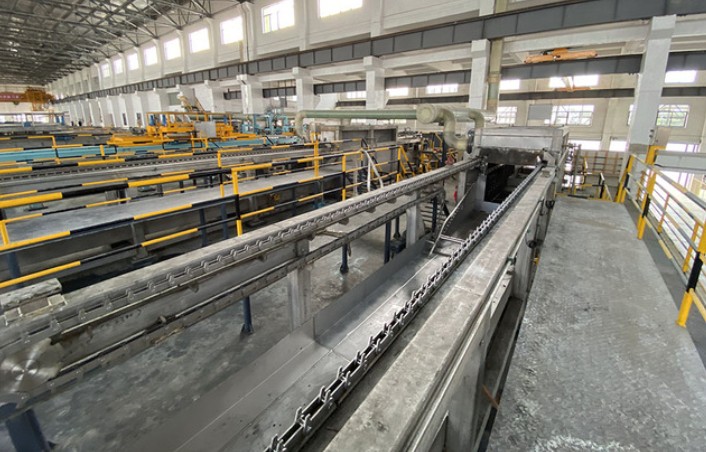NEWS&EVENTS
Home > News&Events > Company news > Key Technologies and Quality Control in Electrolytic Antimony Anode Casting
In the electrolytic antimony production process, anode casting is a crucial step, and the electrolytic antimony anode casting equipment is the core component ensuring the smooth operation of this step. This equipment integrates melting, metering, forming, cooling, and demolding, and is mostly an automated or semi-automated system. To produce high-quality anode plates, it is necessary to control many key technologies and quality points.

Temperature control is paramount. The melting and casting temperatures must be precisely controlled. Low temperatures result in poor antimony melt fluidity, leading to cold shuts in the castings; high temperatures result in coarse grains, severe oxidation, and increased brittleness of the anode plates. Quantitative accuracy is also crucial; each anode plate must have a uniform weight to ensure uniform anodic current density and synchronous dissolution within the electrolytic cell. Mold maintenance is equally critical. Regularly cleaning the mold surface of residues and oxide scale, and checking for cracks or deformation, ensures that the cast anode plates meet specifications. Regarding compositional uniformity, proper stirring during melting can prevent antimony melt segregation within the furnace.
By strictly controlling these key technologies and quality points, the electrolytic antimony anode casting equipment is committed to producing high-quality anode plates with precise weight, uniform thickness, smooth surface, and good conductivity. This lays a solid foundation for the subsequent efficient and stable electrolytic refining process and promotes the high-quality development of the electrolytic antimony industry.